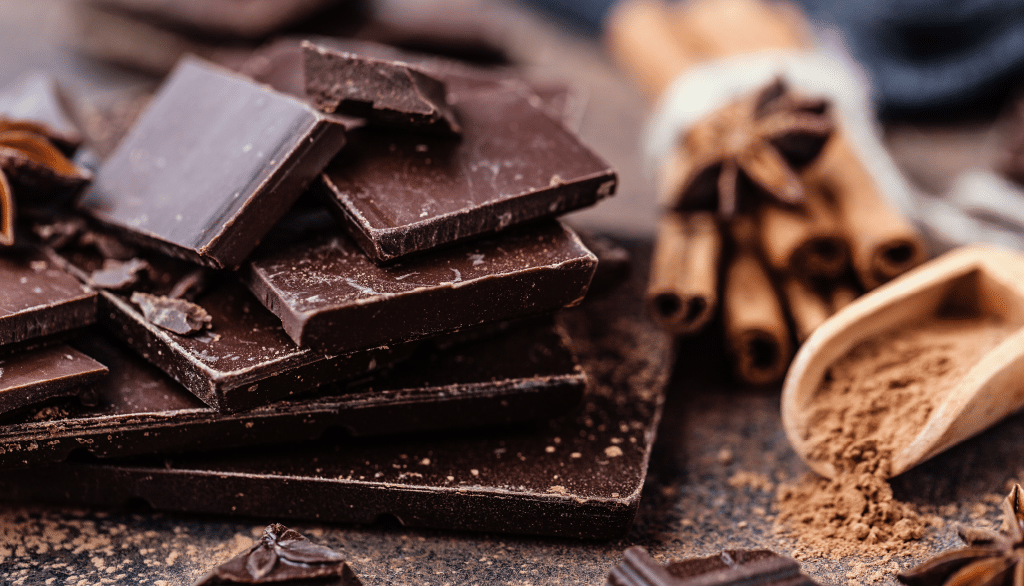
In this six-part blog series, I’ll share interesting and practical cooking insights that I learned from HarvardX’s Science & Cooking: From Haute Cuisine to Soft Matter Science (chemistry). I’m a scientist who loves cooking, and working from home and having lots of free time, has allowed me to bring my two passions together. Bon appetit!
I have always been fascinated with chocolate artwork! It was a mystery to me, until now. I knew that you had to temper it, which means to heat it and then cool it, but I didn’t know why. Every time I worked with chocolate, I had issues with it, like the chocolate did not solidify, it got opaque, or it did not melt. In this course, I realized that chocolate is such a complex mix of things.
Chocolate is made of cocoa. Cocoa is a fruit, like a small melon, that only grows in tropical areas. The cocoa’s interior contains beans that are called cocoa nibs. Those beans go through different steps before becoming the chocolate that we know: They are first fermented, then dried, roasted, and finally milled to obtain 100% pure cocoa paste (or liquor). The cocoa paste is composed of cocoa powder (or cocoa mass), which is the solid part of the bean, and cocoa butter, which is a kind of fat from the cocoa beans. The cocoa powder is usually used for baking and has a rich chocolate flavor. The cocoa butter, on the other hand, doesn’t have a strong flavor but gives the chocolate that silky and mouth-watering sensation. Cocoa butter is used in many foods, cosmetics, and beauty products.
Cocoa paste and its components — cocoa powder and cocoa butter — are the important ingredients in the edible chocolate that we know. Dark chocolate is made out of cocoa paste and sugar. Milk chocolate is a mix of cocoa paste, sugar, and powdered milk. Finally, white chocolate is a mix of cocoa butter with powdered milk and sugar.
The science that makes chocolate silky, smooth, and crunchy all at the same time!
Cocoa butter is a very special kind of fat that has unique properties. This makes chocolate famously “melt in your mouth but not on your hands,” and it also adds the silky and smooth taste. Cocoa butter’s melting temperatures are in the range of 81 to 95°F. Many fats have only one solid phase, but cocoa butter has actually six different solid phases, or crystals. Each crystal is formed at different temperatures, from 64 to 97°F. When using chocolate, we’re only interested in the fifth type of crystal, which is produced when the chocolate is kept at 86°F. The fifth crystal helps obtain the shiny chocolate that snaps when breaking.
Tempering the chocolate promotes only the desired crystal to form. To do this, it’s first melted at 115-120°F. A portion of the melted chocolate is cooled down to 82°F on a cold surface, like a marble slab. Then both parts of the chocolate (the one cooled down and the one that was not cooled) are mixed again to obtain a final mixture of 86°F. By quickly cooling down the chocolate from 115 to 86°F, all the crystals are dissolved, and only the desired one is formed. If the chocolate is not tempered, there will be a mix of crystals on the chocolate, the appearance will be opaque and difficult to solidify due to the structure of the other crystals.
So, the next time you’re enjoying chocolate, remember the silky and smooth texture along with the satisfying crunch comes from properties that make chocolate very special.
























